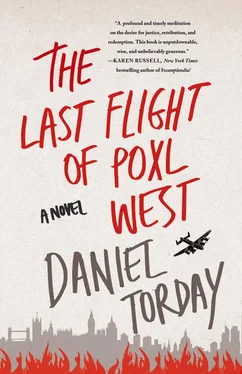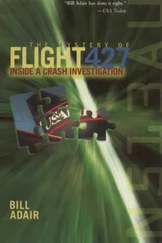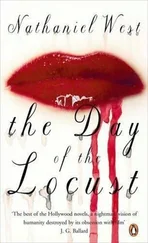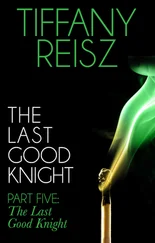“Our plan,” Navigator Smith said when I asked about our mission, he being navigator and so the most obvious person to ask about a flight path, “is to fly in an aeroplane and drop some four-thousand-pound blockbusters on Jerry’s head. What more do you need to know?”
I said nothing, finding Navigator Smith unlikely to be my ally, and was ready to depart when another of our crew came up alongside us.
“Ease up, Percy,” he said. This new face belonged to our bomb aimer — and also the front gunner, as that crew member did double duty on a Lancaster. He was a troll at just under five feet, a Canadian called John Gallsworthy. Within moments of meeting him I came to see he would be the antidote to the absence in my routine of Clive Pillsbury. Gallsworthy was an oafish, pigeon-toed nineteen-year-old who acted and spoke with the benefit of an education far beyond his years. Not long after we met we would find we had in common a great love of the classical and contemporary painters my mother had introduced me to when I was a boy. Gallsworthy had taken two years of courses in the history of art at McGill before the war. He stashed by his bed half a dozen books full of the paintings of Constable, Géricault, David, and Delacroix, and I came by a redoubled education in the history of British and French painting from my acquaintance with this thick-bodied pug.
We returned to our Nissen hut to begin flight preparations.
“To start,” Gallsworthy said, “you should know that not only is our navigator Percival Smith a difficult case, but the pilot you’re replacing was his closest friend all the way back to their days at Eton. He’s predisposed to a certain acrimony toward you. A number of the boys in One Hundred Squadron were with them in a first-year class at King’s College, and after training they were left to pick crews. They all chose to stay together — but you and I and the Aussie, Ford, were forced upon them.”
As he would be every time I saw him, Gallsworthy was smoking. He took a deep drag. In my memory I see a middle-aged man drawing upon his ancient cigarette, though Gallsworthy wasn’t yet twenty.
“Losing Binghamton has been very hard on Percy Smith. Don’t take what you get from him to heart. But, still, you might prepare to be at the center of his sights for the coming weeks.”
All the men in the crew, with the exception of their pilot, had been flying together for the past year. They were the only Lancaster crew to have remained intact since the beginning of the bombing of the Ruhr Valley, having spent better than four months flying in Lancaster S859, S-Sugar. Having lost Binghamton only a week before had undone their imperturbable sense of identity — as flies to wanton boys we are to the gods. They kill us for their sport.
I was to be the new face in this bunch, a group that before my arrival had been on one of the first bombers in the now-famous Thousand Bomber Raid on Cologne — the greatest success of the bombing campaign to date. There was a level of upheaval from having lost one of theirs, and a pride for their successes.
In addition to providing this reading of navigator Smith, Gallsworthy proceeded to run through the unofficial flight preparation with me, reminding me of what I’d learned more than a year ago in elementary training: One must shave to maintain a proper seal on the oxygen mask he would need above five thousand feet. Most of the gunners wore three pairs of socks, and I might consider doing the same. Above all, one had to know where his parachute was at all times and where his Mae West — what we called the inflatable jacket for a water landing — was, for as S-Sugar had been flying patched up but intact for dozens of runs, its luck was bound to shift.
Gallsworthy interpreted apprehension on my face and finished by saying, “Tonight is to be an easy run.”
I took this as a great relief, and I said so.
“Don’t go taking it as that,” Gallsworthy said. “Just hold yourself together. We always draw an easy run before a serious one, to boost morale.”
5.
At 1700 hours Gallsworthy and I jumped a truck to the airfield. Navigator Smith was focused, along with Flight Engineer Smith, on securing something under the nacelle on our side of the plane. Erks performed a check of escape hatches, panels, tires. We climbed into the waist of the plane. I moved up to the cockpit, where I took my place next to the pilot I would soon take over from, the Aussie, Mark Ford, who was to become an officer and would move on to training new pilots. He had huge hands, was notorious for demanding silence from his crew, and I was to learn before long that as much enmity as I’d experienced from the rest of his crew, doing away with him would come as a kind of welcome departure for many men in S-Sugar.
We taxied behind another Lancaster. As we began to roll there was a great noise from the engines and into our headsets Ford said, “Six oh five,” and I looked at my watch and repeated it. Ford said, “Check the oil” and I said, “Oil okay,” and he said, “Flaps twenty-five degrees,” and I repeated it, and he said, “Radiator shutters automatic,” and I repeated that. We taxied farther and a flash of light came from the flight tower, and while Ford pushed the throttle forward with his right hand, I took it palm-up with my left and pushed it full again, an activity I found easiest done with my right glove off, just as I had for that switch back in my Spitfire.
Our path to the North Sea was conducted in Ford’s officious silence, save for the moment when we rose past five thousand feet and he called for us to put on oxygen masks. We’d lifted off with the sun at our backs. As we passed over the verdant landscape on our way southeast again, my memory was granted a new layer: In odd-shaped green field after odd-shaped green field were the dark borders of a Cézanne, whose paintings Gallsworthy had lingered upon in his books. Forever the face of each crew member is reconstituted in my mind now in the image of those plots of land. As we traversed the easternmost airspace over England, navigator Smith called out our coordinates at each turning point and Ford and I made our turns until we were over the North Sea.
Gallsworthy had made clear after the briefing that defenses would be densest over Cuxhaven. We were to be on the alert.
We rendezvoused with a squadron of Spitfires to our starboard, who waggled their wings in greeting and joined us as we came into formation with the rest of our bomber squadron. Our wings were not ten yards from theirs. At altitude, I replaced my glove. It was cold up there. I buttoned the fur collar of my jacket and every few minutes I thought to waggle my toes like the Spitfires’ wings. Gallsworthy had warned me the night before of pilots who had been taken off flights for weeks because of frostbite they’d received at thirty thousand feet. I’d been in hospital enough and wasn’t going to take any chances.
“Open eyes and clear minds,” Ford said. “Coming up, Cuxhaven.”
Thirty seconds later, orange bursts lighted within clouds below. The closer we came in our approach to Cuxhaven, the more we heard the explosion of flak, until for the first time I felt our plane concuss — Ford banked left. We were so tight in formation we nearly clipped the wing of a bomber not ten feet from the Perspex of our cockpit.
McSorely came over the interphone: “Jerry — port quarter — two o’clock — closing.”
Messerschmitt 110’s arose in echelons so close I could see each pilot’s face and they opened their guns: a fluid expansion of night against dark crepuscular sky. In the brown light, flak explosions lit the double-finned tails of three Me110’s. Red and orange tracers corkscrewed and bullets plinked our side. I dropped my right glove again. I was about to jam hard against the control column and bolt to the airspace below, far out of formation, when a Spitfire came hard on that Me110’s starboard. A contrail of smoke leaked from its back. It turned straight down on a perpendicular vector in the half-lit evening sky toward the dark earth.
Читать дальше












